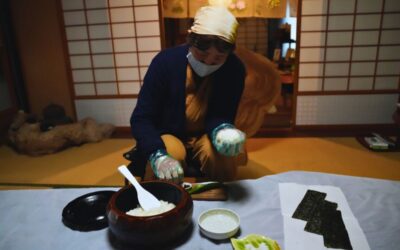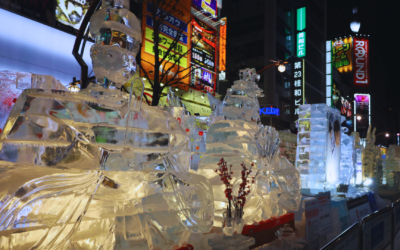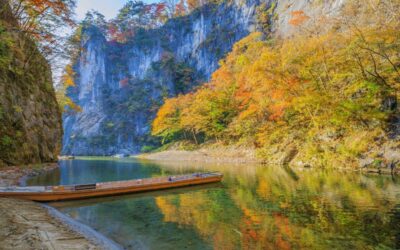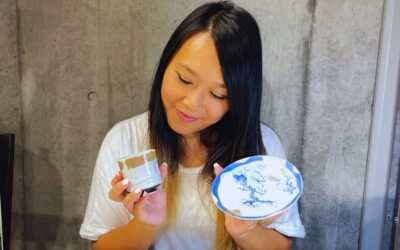When’s the best month to visit Japan? It’s the question every traveller asks — and the truth is, there’s no one-size-fits-all answer. Some people want peak cherry blossoms. Others are in it for the food, the festivals, the snow, or the peaceful off-season vibes. The good news? Every single month in Japan has its own kind of magic.
Instead of picking just one “perfect” time, this Japan by season guide shows you what to expect when visiting throughout the year, from the buzz of summer matsuri to crisp autumn leaves and quiet winter onsens. Chasing spring flowers? Dreaming of lantern festivals? Keen to avoid the crowds? Whatever your travel style, you’ll find your moment.
Planning Your Japan Trip
Need a little more help planning your Japan trip? We’ve helped thousands to create and live out their dream Japan itinerary with our expert travel planning services. Get in touch and take the first step towards Japan.
Japan by Season: Spring

Spring in Japan is one of the most popular seasons to visit, and we understand why; the weather is pleasant, there are cultural festivals in all directions, and (of course) it is when the cherry blossoms bloom. Of course, the payoff for visiting during these spectacular months is that a lot of other people are visiting as well, so you should expect crowds in the more touristy areas.
March
March in Japan is a month of transition. Winter lingers in some places, but spring starts to creep in, especially in the south. Early cherry blossoms may bloom towards the end of the month, and you can feel a shift in the energy — schools are wrapping up, gardens are coming to life, and excitement is in the air. If you’re hoping to catch the start of sakura season, late March is when the magic begins in many cities.
April
This is cherry blossom season at its peak, and it’s every bit as beautiful as it sounds. During April in Japan, parks and riversides are filled with hanami picnics, and the country feels festive and full of joy. From Kyoto to Tokyo to smaller towns, blossoms take over the landscape. It’s one of the busiest times of year for travel—and for good reason. Just be prepared to share the view.
May
Fresh, green and vibrant, May in Japan is a breath of fresh air. After the sakura fade, the countryside turns lush and full of life. Early in the month is Golden Week, a string of public holidays when many locals travel, but after that, things settle down again. It’s a lovely time for outdoor adventures, nature walks and city exploring.
Japan by Season: Summer

Japan in summer can be summarised simply: heat, humidity, and so much fun. From beach getaways to summer festivals and a whole lot of fireworks, the season is all about connection and activity. Yes, the weather can be tough to manage, but if you’re willing to face the heat head-on, you’ll be rewarded with some incredible memories:
June
June in Japan marks the start of the rainy season across much of Japan. The upside? Everything is green and glowing, and hydrangeas burst into bloom at temples and gardens. The mood is calm and romantic in a misty sort of way. It’s not everyone’s favourite weather-wise, but there’s something charming about the quiet, the reflections on old stone paths, and the way the rain brings out a slower, softer side of the country.
July
Summer officially arrives with long days, festival energy, and fireworks lighting up the skies. Gion Matsuri in Kyoto is one of Japan’s biggest traditional festivals and a real cultural spectacle. It’s also a popular time to head into the mountains or out to the beaches. The heat and humidity during July in Japan can be intense, but the energy of summer matsuri makes it totally worth it.
August
August in Japan is full of colour, music and movement. Traditional Obon celebrations take place in mid-August, with lanterns, bon dances and a strong cultural heartbeat. Fireworks festivals continue, and summer food is everywhere — cold noodles, shaved ice, fresh seafood. Some areas may see typhoons, especially later in the month, but if you’re into summer festivals and street life, this is one of the most exciting times to visit.
Japan by Season: Autumn

Ask any local and they’ll tell you that autumn in Japan is the best time to visit. Not only is the weather perfectly mild without getting too hot or too cold, but it is also arguably when Japan looks the most beautiful. Koyo (autumn leaves) transform the countryside into dazzling golds and striking reds, with people happy and excited to spend time outside again once summer’s heat has faded.
September
The intensity of summer begins to ease a little in Japan in September, though it can still be warm and humid early on. Autumn colours start to appear in cooler regions, and the air slowly turns more comfortable. You might get the occasional typhoon, but between those, it’s a peaceful time to explore—a bit of a breather before the big autumn rush begins.
October
Cool, bright and beautiful—in Japan, October is the gateway to autumn. The changing leaves begin to show in the mountains, the skies are often clear, and it’s a fantastic time for day trips, nature walks and temple visits. Cultural festivals pop up in towns and cities, and the whole country feels fresh and open.
November
November in Japan is the peak autumn leaf season in many regions. Maple trees and ginkgos turn vivid shades of red and gold, especially in Kyoto, Nikko, and Tokyo’s parks. It’s a favourite time for photographers and nature lovers alike. The air is cool and comfy, perfect for long walks and slow travel.
Japan by Season: Winter

There’s something quite magical about Japan in winter. The country leans into the cold and snowy atmosphere with sparkling light shows and plenty of warm, hearty meals. If skiing or snowboarding is your thing, then you cannot beat hitting the slopes, but even if you prefer a slower-paced winter, there’s still so much to do and see during these months.
December
Early December in Japan is twinkly and festive, with winter illuminations and a growing holiday vibe. Towards the end of the month, New Year preparations begin, and things start to feel more traditional and reflective. In the mountains and up north, snow begins to fall properly, making it a dreamy time to dip into an onsen and watch the steam rise into the cold air.
January
Japan starts the year with quiet, frosty beauty. In the mountains and up north, snow blankets the landscape, making it perfect for ski trips and onsen escapes. You’ll still find some festive energy around shrines and temples as people celebrate the New Year, but most places feel calm and reflective during January in Japan. It’s a great time for anyone who loves crisp air, winter scenery and a slower pace.
February
February in Japan is still deep winter, especially in northern regions, with some of the most scenic snowy spots in the country. The Sapporo Snow Festival is a major highlight, with jaw-dropping ice sculptures and winter fun. In milder areas, plum blossoms may start to bloom, offering an early glimpse of spring. It’s a peaceful time to explore without the usual crowds.
When is the Best Month to Visit Japan…
Japan has so many sides, and the best month to go really depends on what you’re hoping to experience. Here’s a deeper look at what each season brings, and when to go for the kind of trip you want.
For Cherry Blossoms

The cherry blossom season is one of the country’s most iconic and beloved moments. In most places, the best month to visit Japan for the sakura bloom is between late March and early April, with Tokyo, Kyoto and Hiroshima usually hitting full bloom around that time.
These delicate pink flowers cover parks, riversides and temple grounds, and people gather for hanami picnics under the trees. The atmosphere is festive and joyful, with a sense of shared celebration everywhere you go.
It’s worth knowing that the timing of the bloom changes slightly each year depending on the weather, and it rolls from south to north, so places like Fukuoka bloom earlier, while Hokkaido sees sakura as late as May.
It’s also a busy season, so popular spots can be crowded and booked up. Still, for many travellers, seeing the cherry blossoms in full bloom is an unforgettable experience that’s absolutely worth planning for.
For Onsen & Snow

For dreamy hot spring moments, winter is hard to beat. From December through February, snowy landscapes and steamy onsen baths make the perfect combo. Onsen towns like Kusatsu, Kinosaki, and Nyuto are especially beautiful in winter, and the whole experience feels cosy, quiet, and deeply relaxing.
You can also combine your onsen trip with skiing or snowboarding in places like Niseko or Hakuba, where powdery snow and mountain views add to the vibe. While you can enjoy hot springs year-round, there’s something truly special about sitting in an outdoor bath while snow falls around you…it’s pure magic.
Can’t decide between snow-covered mountains and soft pink cherry blossoms? You don’t have to. Our Sakura and Snow Monkey Japan Adventure lets you experience both in a single unforgettable journey.
This 10-day small-group tour starts in Tokyo and winds through the snowy peaks of Nagano, where you’ll meet the famous snow monkeys soaking in natural hot springs. From there, head south to Atami for Japan’s earliest cherry blossoms in full bloom, before continuing on to Kyoto, Nara, and Osaka for temples, culture, and incredible food.
With a mix of private and public transport, expert guidance, and all the seasonal highlights packed in, this trip is designed for travellers who want the best of both worlds: winter wonder and the first signs of spring.
For Other Blossoms (Plum, Wisteria, Hydrangeas)

While cherry blossoms get all the love, Japan’s floral calendar is packed with other stunners. Plum blossoms, or ume, bloom as early as February and bring a lovely burst of pinks and whites to parks and gardens, especially in Kyoto and Tokyo. They symbolise early spring and have a gentle, peaceful charm with far fewer crowds.
Wisteria season hits in late April to early May, with dreamy tunnels of purple and white hanging in places like Ashikaga Flower Park. Then in June, hydrangeas start blooming just as the rainy season arrives, giving temple gardens a lush, misty, romantic feel. If you love flowers but want something quieter or less seasonal-pressure-y than sakura, these blooms are a great alternative.
For Festivals

If you want to experience Japan at its most vibrant and energetic, summer is the time to go. July and August are packed with festivals—known as matsuri—where fireworks light up the skies and city streets come alive with traditional music, dancing, and glowing lanterns. Gion Matsuri in Kyoto, Tenjin Matsuri in Osaka, and Awa Odori in Tokushima are some of the biggest and most unforgettable.
It’s hot and humid, but the atmosphere is electric. You’ll find people in yukata, food stalls lining the streets, and a real community spirit. If you’re into lively nights and cultural celebrations, summer matsuri are a must.
For Autumn Leaves
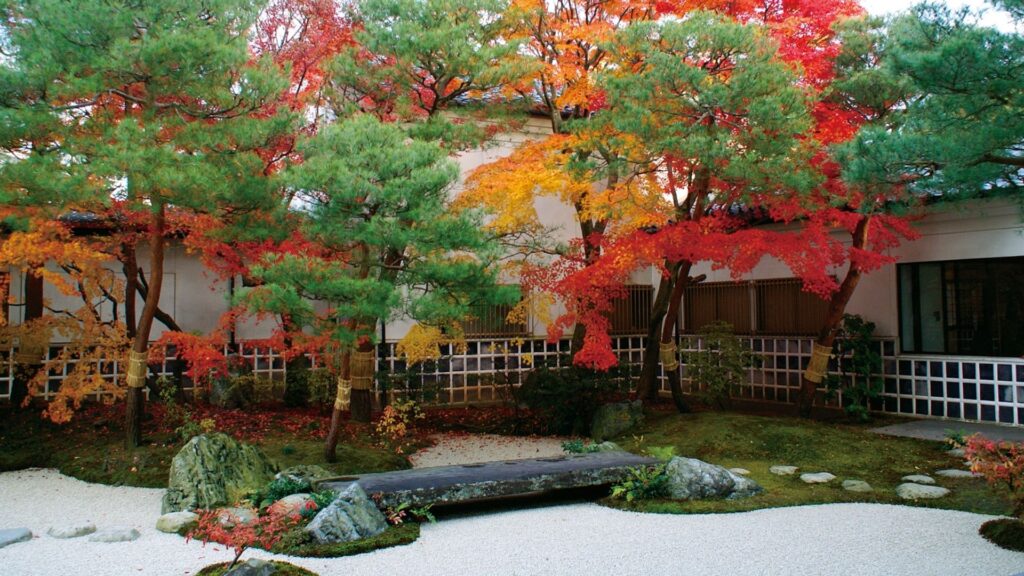
Autumn in Japan is breathtaking. If you’re looking to catch the beautiful fall leaves, then the best month to visit Japan is October or November, when parks, temples, and mountains light up with fiery reds, oranges, and golden yellows. It’s known as koyo season, and it’s one of the most loved times of year for both locals and visitors. Kyoto, Nara, Nikko, and even city parks in Tokyo put on an incredible show.
The air is crisp, the skies are often clear, and it’s ideal for long walks, photography, and quiet contemplation. You’ll also find seasonal foods like roasted chestnuts and sweet potatoes, plus special evening illuminations in temple gardens. It’s a slower, more reflective season than spring, and arguably just as beautiful.
For Fewer Crowds
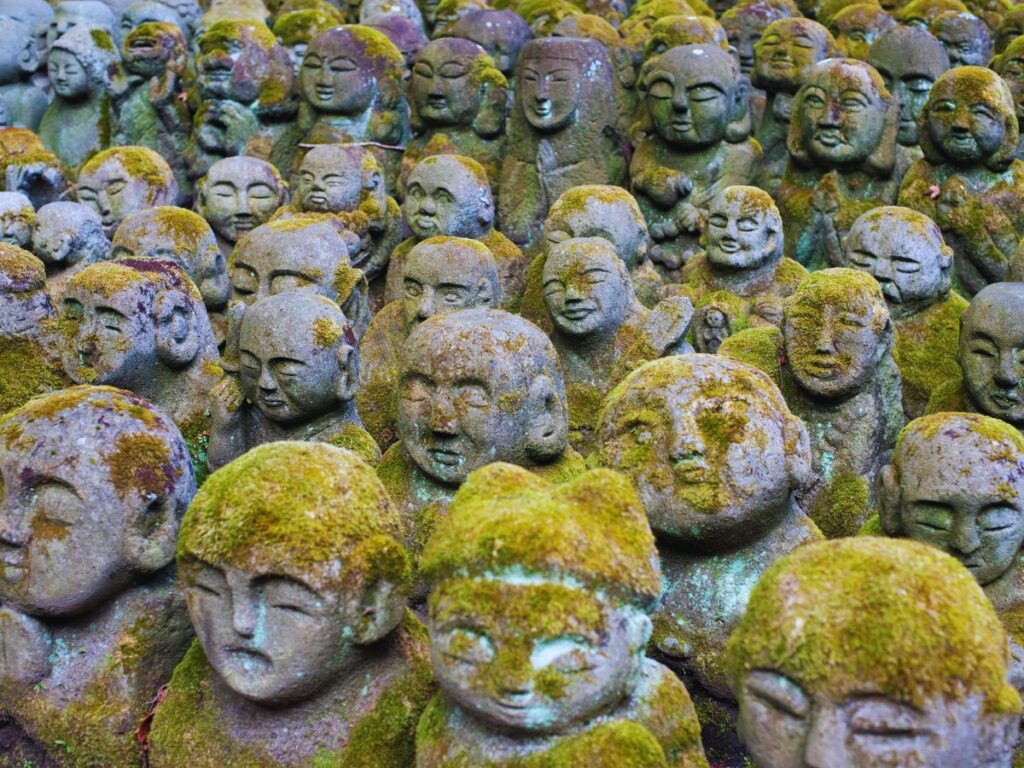
If you’d rather avoid big tourist crowds, your best bet is to visit outside of major bloom and holiday periods. January (after the New Year holiday), February, and early December tend to be calm, with fewer tourists and a more laid-back pace—especially in popular places like Kyoto or Tokyo.
These months let you explore temples, shrines and historic streets without jostling for space. You’ll get a more peaceful vibe, and it’s easier to take your time and really absorb the atmosphere. Rainy season in June is also much quieter than people expect, and it has its own lush, reflective charm if you don’t mind carrying an umbrella.
For Foodies
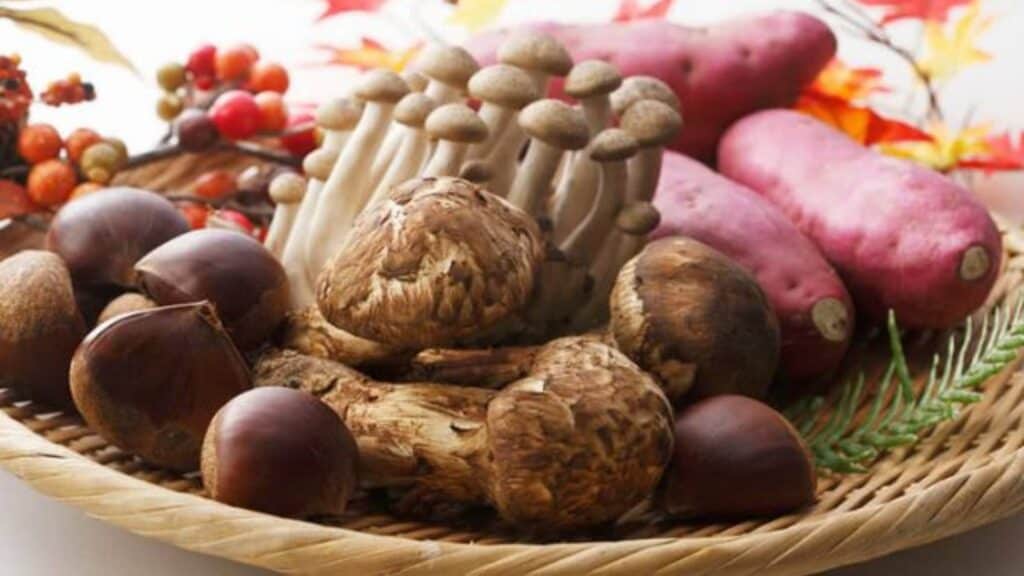
There’s something delicious to eat in Japan at any time of year, but autumn is especially beloved for food. It’s the season of harvest—fresh rice, wild mushrooms, persimmons, sweet potatoes, and seasonal seafood all make an appearance. Street snacks, traditional dishes, and high-end meals all get a seasonal upgrade.
Winter is also amazing for food lovers, with hot pots, grilled fish, winter crab, and juicy strawberries in season. If you’re into street food, summer festivals are full of snacks like yakisoba, corn on the cob, and kakigori (shaved ice). And in spring, you’ll find all sorts of sakura-flavoured treats. Basically, whatever time you choose to go, make sure you arrive hungry.
Want to spend a night discovering Tokyo’s hidden bars, tasty bites, and good vibes? Check out Flip’s Food and Drinks Bar Tour!
For Shopping (Fashion, Tech & Souvenirs)
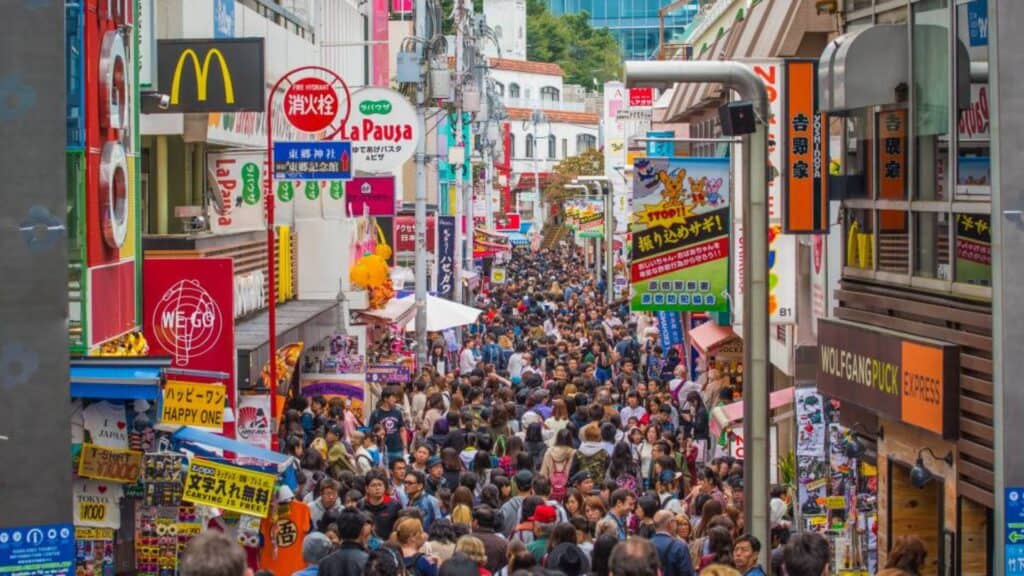
Japan is a dream destination for shopping—not just because of the variety, but because it’s so seasonally themed and fun. January kicks off with huge winter sales, especially after New Year when fukubukuro (lucky bags) take over the shelves. These surprise bags, sold by big-name brands and tiny boutiques alike, are a national tradition and a thrill for bargain hunters.
In June and July, the big summer sales hit, especially in fashion-forward areas like Harajuku, Shibuya, and Osaka’s Shinsaibashi. If you’re into Japanese streetwear or trendy local brands, this is your moment.
And no matter when you visit, you’ll find new seasonal product drops, like limited-edition snacks, themed packaging, and quirky souvenirs that change throughout the year. Shopping in Japan always feels fresh.
For Easy-Breezy Weather Days
![Where to go in spring in Japan Tonami Tulip Park [Toyama Prefecture]](https://flipjapanguide.com/wp-content/uploads/2022/02/Where-to-go-in-spring-in-Japan-Tonami-Tulip-Park-Toyama-Prefecture-1024x576.jpg)
If you’re after the most comfortable weather for exploring, spring and autumn are your sweet spots, with the best month to visit Japan being April or October. These seasons bring mild temperatures, low humidity, and plenty of clear days that are perfect for walking around cities, visiting temples, or heading into nature.
Spring has that fresh, energised feel with flowers in bloom, while autumn offers crisp air and stunning foliage. Both are ideal for travellers who want to stay outdoors most of the day without dealing with extremes. Just keep in mind that they’re also two of the most popular times to visit, so expect more people at major sights.
For Anime, Gaming & Pop Culture

Japan’s pop culture scene is always alive, but certain months are especially exciting if you’re into anime, manga, gaming or cosplay. March and August are key, with massive fan events like Comiket (a doujinshi mega-fair) and AnimeJapan in Tokyo. These attract huge crowds, amazing cosplay, and early peeks at upcoming releases. Summer also tends to bring loads of expos, pop-up cafes, and interactive events tied to big franchises.
Of course, no matter the season, Japan remains as the mecca of anime! In fact, you can spend a few hours with our in-house otakus in Akihabara’s hottest spots by booking our Otaku Tour for Anime and Manga Lovers!
For Kimono Weather & Photo Ops

If you’ve ever imagined yourself walking through an old Japanese street in a beautiful kimono, spring and autumn are the best times to make it happen. The weather is comfortable—not too hot, not too chilly—and the scenery is especially photogenic during the cherry blossom or autumn leaves season.
It’s popular in places like Kyoto’s Gion district or Kanazawa’s old samurai neighbourhoods, where the setting adds to the atmosphere. Just book ahead during busy seasons—they fill up fast!
So… When is the Best Month to Visit Japan?
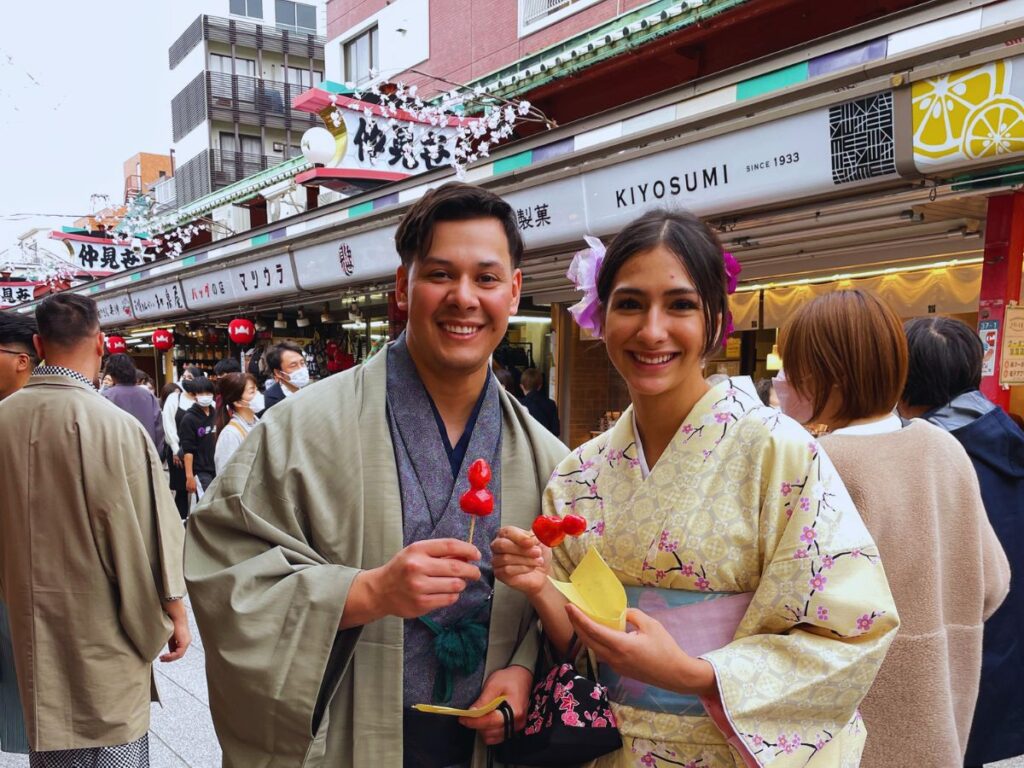
The real answer? The best month to visit Japan depends on you. Japan isn’t the kind of place that has just one perfect season—every month offers something different, and that’s part of the magic. Some travellers fall in love with cherry blossom season. Others swear by the quiet charm of winter, the buzz of summer festivals, or the glowing colours of autumn.
The best month to visit Japan is when it matches the kind of trip you want. Nature? Culture? Food? Calm? Chaos? There’s a version of Japan that fits all of it. Hopefully, this guide helped you figure out when your Japan might be waiting.
And honestly, once you’ve been, you’ll probably want to come back again (and again). So why not try a different season next time? Each visit shows you something new, and that’s what makes travelling in Japan so special.
FAQs About the Best Month to Visit Japan
What month is not busy in Japan?
January (after the New Year holiday), February, and early December are typically quieter. These months are great if you’re after a slower pace and fewer crowds at major sights.
What is the most expensive month to visit Japan?
April is usually the most expensive, especially during peak cherry blossom season. Golden Week in early May is another high-demand period with busy transport and fully booked accommodation.
What is the most popular time to go to Japan?
Late March to early April for cherry blossoms and mid to late November for autumn leaves. Both are stunning, but also the busiest times to visit.
What is the best weather month to go to Japan?
April, May, October and November have the most pleasant weather — mild temperatures, low humidity, and lots of clear skies. Ideal for sightseeing and being outdoors.
What is the cheapest month to go to Japan?
January and February tend to be more budget-friendly (excluding New Year week). You’ll find fewer tourists, off-season pricing, and great winter scenery.
Which month is good in Japan?
Honestly? All of them — it just depends on what you’re into. From snowy onsens to summer festivals, Japan has something special every month of the year.

